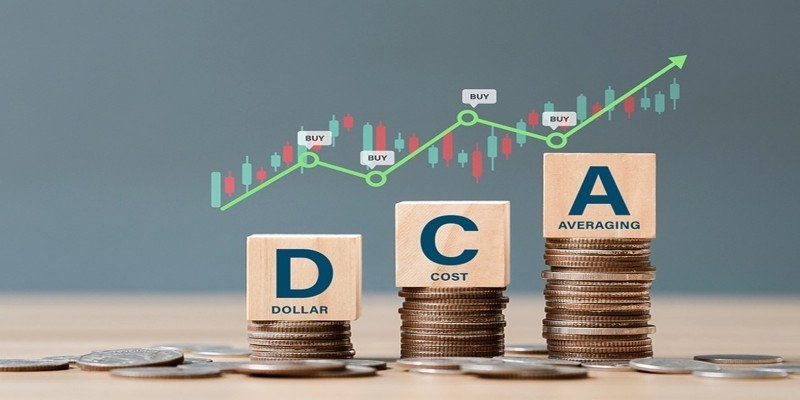Investing can seem daunting, especially when you're just starting. But the truth is, you don't need thousands of dollars to begin. With just $500, you can enter the investing world and build your financial future. This article covers practical ways to make the most of that $500, providing detailed guidance on approaching different investment options, managing risk, and setting financial goals.
Before investing any money, it's crucial to define your investment goals. Knowing your objectives helps you select the right investment strategies and manage your expectations. Are you investing for the short term (e.g., saving for a vacation or a down payment on a house) or for the long term (e.g., retirement savings or building wealth)?
Understanding your goals will also help you gauge how much risk you're comfortable taking. For example, if you're saving for a goal that's a few years away, you might be willing to take more risks for higher potential returns. However, if your investment goal is short-term, you'll likely choose safer, more stable investments.
One of the best ways to invest $500 is by buying Exchange-Traded Funds (ETFs). ETFs are a collection of various assets, like stocks or bonds. They allow investors to diversify their portfolios with a relatively small amount of money, which helps to reduce risk.
ETFs are an excellent choice for beginners because they are low-cost and provide built-in diversification. With $500, you can invest in ETFs that track the performance of an entire market or sector. For instance, you could invest in an S&P 500 ETF, which includes the top 500 companies in the U.S., or a broad global ETF to spread your investments across international markets.
If you're new to investing and unsure about picking individual stocks or bonds, a robo-advisor might be the perfect solution. Robo-advisors are automated investment platforms that create a portfolio based on your financial goals, risk tolerance, and investment preferences. These platforms use algorithms to manage your investments, making them a low-cost and low-maintenance option for beginners.

Popular robo-advisors like Betterment or Wealthfront allow you to start investing with as little as $500. After answering a series of questions to assess your financial situation and goals, the platform will recommend a portfolio composed of low-cost ETFs, typically diversified across stocks, bonds, and other asset classes. While robo-advisors charge management fees (usually around 0.25% to 0.5% annually), these fees are generally lower than what you would pay for traditional investment management services.
Investing in individual stocks is another option when you have $500. However, this approach requires more research and a better understanding of the stock market. Unlike ETFs, individual stocks carry more risk, as the price of a single stock can fluctuate based on factors such as company performance, industry trends, and economic conditions.

Choosing companies with strong growth potential and solid fundamentals is essential to minimise risk while investing in individual stocks. Look for stocks offering value and growth, or consider well-established companies with a consistent performance history. You can also consider purchasing fractional shares, which allows you to invest in stocks that may have a high price per share, such as Amazon or Tesla, without needing to invest large sums of money.
With $500, you won’t be able to build a highly diversified stock portfolio, but you can still pick a few individual stocks that align with your investment strategy. Make sure to monitor your investments regularly and be ready for the inherent volatility that comes with the stock market.
Another option for investing your $500 is through peer-to-peer (P2P) lending platforms like LendingClub or Prosper. These platforms connect investors with individuals or businesses that need loans, allowing you to lend money directly to borrowers in exchange for interest payments.

P2P lending can provide a higher return than traditional bank savings accounts or CDs but also comes with higher risk. Borrowers may default on their loans, leaving you at a loss. Researching the platform and borrower profiles thoroughly before committing your money is essential. Some P2P platforms offer automatic diversification, spreading your investment across multiple loans, which can help manage risk.
With $500, you could spread your investment across several loans, reducing the impact of a single default. Investing in loans with different risk levels is also a good idea, as is balancing higher-return loans with more stable, lower-risk options.
If you're looking for a low-risk way to grow your money, a high-yield savings account or certificate of deposit (CD) might be a suitable option. These are some of the safest investment vehicles available and are great for short-term investing if you're unwilling to take on much risk.

High-yield savings accounts offer higher interest rates than traditional ones, typically from 1% to 4%, depending on the bank and market conditions. While the returns are modest, they are guaranteed by the Federal Deposit Insurance Corporation (FDIC) up to $250,000, which makes them an attractive option for conservative investors.
On the other hand, CDs are time deposits that offer a fixed interest rate for a specified term, usually ranging from a few months to several years. They are low-risk but offer limited liquidity, as you can't access your money before the term ends without paying a penalty. However, if you're willing to lock up your money for a certain period, a CD can be a good way to earn a predictable return on your $500.
One key strategy that can help you manage your investments over time is dollar-cost averaging (DCA). With DCA, you invest a fixed amount of money regularly, regardless of market conditions. This approach helps reduce the impact of market volatility and lowers the risk of making poor investment decisions based on short-term market fluctuations.

For example, if you have $500, you can invest $100 monthly in ETFs or individual stocks for five months. This strategy smooths out the effect of market highs and lows, ensuring you don't invest all your money at a potentially destructive time. DCA works particularly well for long-term investors who plan to hold their investments for years.
Starting your investment journey with just $500 is possible, and it doesn't require advanced financial knowledge or a significant amount of capital. Whether you choose ETFs, individual stocks, or safer options like high-yield savings accounts or P2P lending, the key is to start early, be consistent, and stay focused on your financial goals.
Remember, every investor's situation is unique, so take the time to research and choose investments that align with your goals, risk tolerance, and timeline. You can turn your $500 into a solid foundation for building wealth with patience, discipline, and strategy.